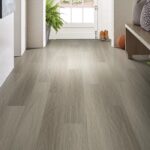Dental veneers are micro-prostheses. With their help, you can restore the shape, color of one tooth, a whole series.
Restoration with veneers involves fixing them to the anterior part of the tooth. They are used to restore the appearance of teeth that fall into the smile line.
The best veneers in turkey practically do not differ in appearance from real teeth. Their color is selected so that it matches the natural color.
In dentistry, veneers are used when whitening or restoring the enamel by other methods will not provide the desired effect. The restoration is carried out as soon as possible.
Table of Contents
What are veneers and why are they needed?
Veneers should be made to restore the aesthetic appearance of the smile. It is better to put them in pairs so that the teeth look the same. The pads look like real ones. Up to 10 teeth can be installed on both jaws.
Dental veneers are a type of prosthetics in which the front of the tooth is closed. As a result, it looks much more aesthetically pleasing.
Veneers are needed if:
- not satisfied with the natural color of their teeth;
- restoration of the integrity of the enamel is required;
- you need to change the size, shape of the tooth;
- correction of enamel abnormalities is required (for example, if there is hypoplasia);
- to eliminate interdental spaces.
Veneers mask any imperfections, making your smile beautiful.
For what purposes do dentists use veneers?
Dentists use veneers for dental prosthetics. Unlike crowns, they are placed only on the front of the tooth, hiding its flaws. Onlay teeth look aesthetically pleasing and natural at the same time.
If other restoration work has not given the desired effect, and the patient wants to look different thanks to a more beautiful smile, custom-made dental veneers are also used. The dentist can also prescribe them if there are large gaps between the teeth. In the clinic, onlays can be fixed on both the lower and upper teeth.
Veneers for aesthetics
Veneers can make a perfect smile. However, it can look natural. Veneers on the front teeth are able to change their color, deteriorated after the treatment of canals, using tetracycline. They are also excellent at correcting short, misshapen teeth. For this, veneers are fixed on crooked teeth.
Veneers can be placed to close the gaps between the teeth, to solve the problem of gum smile. Overhead veneers can also help if there is weak muscle tone in the lower face area, the skin. The color of veneers is selected individually in each case. When installed on the chewing teeth, a lifting effect for the cheekbones can be achieved. Even if there is one problematic front tooth, this problem can be easily resolved.
Functional purpose of veneers
The use of veneers can correct not only aesthetic problems, but also the occlusion. In this case, we are talking about the wrong relationship of the teeth. It is he who has to be corrected.
Micro-prostheses will allow you to make the jaw look correct. They are able to adhere well and eliminate various defects, including cracks in the teeth, irregularities in the row, existing gaps.
Is it worth putting veneers on the weight of the dentition? Theoretically, this is possible, but most often they are fixed only on the smile line – 8 lower and 10 upper teeth.
What you need to know before installing veneers
Before installation, you need to decide on the material, agree on the color. You also need to know that a layer of enamel will be removed from the hard tooth tissue. What it will be is determined based on the thickness of the veneer.
First, temporary veneers are attached to the patients. The final version is then produced and delivered for daily use. If there is no desire to grind the tooth, it is better to choose thinner designs – lumineers.
Installation indications
The indications for the installation of turnkey veneers are as follows:
- there is a pronounced yellowness of the enamel;
- the shape of the tooth is incorrect;
- there are old fillings whose color is clearly different from the enamel of their teeth;
- there are defects in hard tissues;
- have fluoro teeth;
- change in shade after depulpation;
- there is erosion of the enamel;
- to align the wrong position of the tooth;
- you can use overlays to create a Hollywood smile;
- the teeth are wedge-shaped;
- spots, chips appeared on the tooth;
- there are three and a system.
If there are diseases such as necrosis, enamel erosion or hypoplasia, veneers can be an excellent solution. With necrosis, the enamel is destroyed. Erosion is indicated by the appearance of destruction of hard tissue of an oval or round shape. Hypoplasia is characterized by the absence of a portion of the enamel. With fluorosis, white spots appear on the enamel, which then turn into brown ones.
How to care for veneers: how to care
It is best to use an irrigator to clean the pads. The device works better than a regular brush. The principle of operation is to supply liquid under pressure into the oral cavity.
Veneers should be worn if there is an indication for this. Basically, they are installed with an aesthetic function. But sometimes onlays made of ceramics or other white material perform other tasks, for example, restoring a part of a tooth.
How to take care of veneers
To prevent a rather expensive procedure from turning into wasted money, you should adhere to a few simple rules for caring for veneers:
1. Thorough oral hygiene. Regular teeth cleaning, the use of dental floss, rinse – these rules familiar from childhood allow you to preserve not only your own teeth, but also veneers.
2. The correct toothbrush. It should be of medium hardness, with bristles that will not leave scratches on the surface of the microprosthesis.
3. Maintaining the health of the gums. Gum inflammation can significantly shorten the life of veneers. At the slightest symptom of gum problems, it is better to seek the advice of your doctor.
4. Load on the front teeth – to minimize, or better – to exclude. This applies to eating hard vegetables and fruits, nuts, tough meat, and snapping seeds. It is better to train yourself to cut solid food into small pieces and use exclusively chewing teeth to chew it.
5. Quitting bad habits. And it’s not just about smoking. The habit of biting off a thread with your teeth, gnawing on a pen or pencil threatens that even the most durable material can crack.
6. Exclusion from the diet of foods with coloring pigments. This is especially true for the care of composite veneers, which are more amenable to darkening. Coffee, coloring drinks, cigarettes, over time, negatively affect the color of the tooth enamel. The problem is that veneers cannot be whitened like regular teeth.
7. Temperature differences. It is undesirable to drink ice cream with hot tea even for healthy teeth. Veneers are resistant to temperature changes, but do not test their strength in this way too often.
8. Dangerous sports. If you are engaged in boxing, hockey, martial arts, you should additionally secure your smile with protective devices – for example, mouthguards.
9. Periodic professional inspection. Do not neglect scheduled visits to the dentist. Examination, professional cleaning at least twice a year is a guarantee of dental health and a long service life of veneers.
Veneers are one of the most expensive types of aesthetic dentistry. Therefore, in our clinic “DS Dentistry” only high-quality materials and advanced equipment are used, and the specialists have the required qualifications and experience. This allows us to give patients a guarantee for the work performed. So, subject to the basic rules, the veneers installed with us will provide you with a beautiful smile for a long time.











